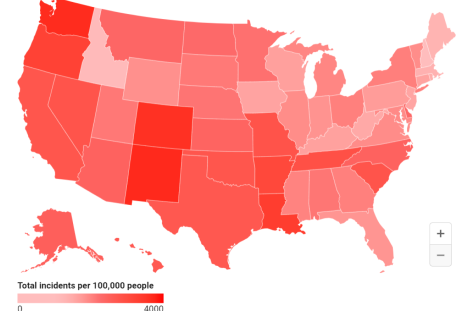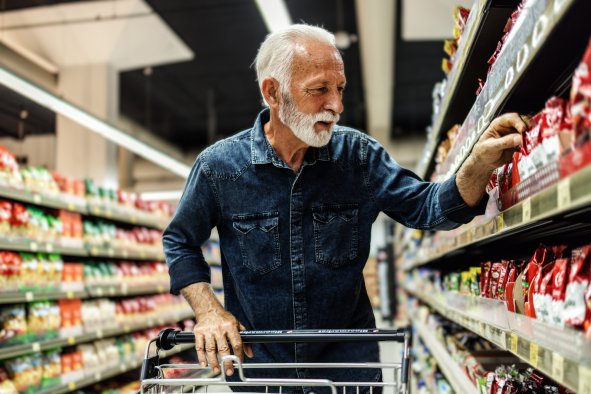Health systems across the U.S. are questioning what value-based care looks like in practice. When I meet with Tim Curtin, vice president of community services at Memorial Healthcare System, he seems to have it figured out—thanks, in part, to his parks and recreation job during the crack cocaine epidemic of the '80s.
Curtin lived in New York City at the time and was responsible for locking the gates at a small park in Harlem. The park would fill with kids after school let out, but when closing time rolled around, they didn't want to go home. The kids told Curtin their parents and older siblings were abusing drugs, and they did not feel safe in their houses.
"So I said, 'Well, if you guys are gonna hang out here, let's open some books. Let's do some homework,'" Curtin said. "I ran down to the local bodega—I mean, this is how long ago it was, it was a nickel for a Little Debbie and a nickel for those little round bottles of blue juicy drinks—so I buy like a half a dozen of each. That was a snack. And we do our homework. And we talk about how you won't end up like your older brother in the future."
And then he would walk the kids home, "one at a time."
It's hardly surprising that Curtin leaned into a career in social work, eventually landing at Memorial Healthcare System. The Hollywood, Florida-based organization has been leaning into value-based care for about a decade and has been nationally recognized for its work, including an accountable care organization (ACO) that saved five times more than any other health system-organized ACO in 2021, and a Social Determinants of Health (SDOH) Hub that has connected more than 900 patients with necessary assistance in the past six months.
Curtin currently works within that SDOH Hub, leading a team of 322 staff members who are employed by the health system but don't work in any of its six hospitals. Rather, these professionals work to improve health care access and outcomes in the community—beyond what is possible in a clinical setting alone.
Memorial's community-facing team—which includes social workers, mental health counselors and substance abuse prevention specialists—leads initiatives for people of all ages who are experiencing crises of all sorts. The system runs senior centers and summer camps for kids with special needs; it hosts programs for new mothers overcoming maternal stress and for youth aging out of foster care.
"Medical interventions are only about 20 percent of [caring for] a whole person," Curtin said. "Their environment, the behavioral choices they make, the access to healthy food that they may or may not have, transportation...all of these things create a much healthier person, so we look at 20 percent of the work [as] being done in the hospital and the other 80 percent as community issues."
It's similar to the philosophy Curtin employed all those years ago in Harlem. Children weren't loitering at the park for the sake of loitering, but because there weren't other safe spaces for them to land. Likewise, a patient who consistently misses appointments might not be forgetful—they could be lacking reliable transportation or child care.
Memorial has conducted community health needs assessments since 1994, though they weren't mandated by law until the Affordable Care Act in 2010. The assessments revealed information that was pertinent to patients' health, according to Curtin. For example, air conditioning was not required in Section 8 housing in Florida in the early '90s. Relentless heat can affect stress levels and sleep quality, which can even erode patience over time—leading to increased instances of domestic violence.
"We certainly not only learned a great deal about our community that we didn't know at the time, but we also learned to listen to our residents a lot closer, because they know what they need," Curtin said. "We think we know, but they do know."
Now, when a patient arrives at a Memorial facility, a nurse or member of the admissions staff administers a social history. If the patient discloses a need, it is flagged in Epic, the system's electronic health record. The SDOH Hub is then notified, and reaches out to the patient with assistance.
Memorial maintains a vast network of community partners to call upon, including multiple food pantries and an organization that provides new beds and bedding for children at no cost.
The system individualizes aid wherever possible. In one recent case, a patient needed to refrigerate their medication after being discharged from the hospital. They did not have a refrigerator at home, so Memorial delivered one free of charge.
These programs and donations are typically funded through grants and the system's Memorial Foundation—and their outcomes pay off. From August 2023 until June of this year, 971 patients were referred to the SDOH Hub for food insecurity. After receiving the necessary assistance, the population experienced a 7.6 percent decrease in emergency room visits, a 13.9 percent decrease in admissions and a 5.3 percent decrease in readmissions.
Scott Wester, president and CEO of Memorial Healthcare System, also spoke to the cost-saving benefits of value-based care arrangements. Since starting an accountable care organization with the Centers for Medicare and Medicaid Services (CMS), the system has saved nearly $70 million that has been reinvested into the organization and its providers, according to Wester.
CMS set a goal to have all Original Medicare beneficiaries and the "vast majority" of those on Medicaid in accountable care relationships by 2030. Participation is on the rise—nearly half of people with traditional Medicare are aligned with an ACO in 2024, a 3 percent increase from last year. ACOs have been shown to have "superior quality performance" to similar physician groups that don't participate in an ACO and have generated year-over-year savings for the Medicare Trust Fund, according to a January 29 blog post from CMS.
For Memorial's high-performing ACO, the "secret sauce" is that "we drive analytics," Wester said. "Then we ensure that we do things to reduce that cost of care. And that reduction of care cost is both on the price and utilization pieces—we know there's a bigger bang for your buck on the utilization side."
Like many ACOs, Memorial reduces reliance on costly emergency services by ensuring access to preventative services: primary care and a coordinated network of available specialists, and pharmacists to ensure medication adherence.
The system is also ramping up its technology use to achieve its value-based care goals, Wester said. It has been utilizing remote patient monitoring to keep an eye on patients after they are discharged from the hospital. So far, in the cohort of approximately 1,000 patients who have used the technology, the system has recorded a 48 percent reduction in hospital admissions, a 27 percent reduction in readmissions and a 28 percent reduction in emergency department visits.
"But the kicker is a 47 percent increase in primary care visits," Wester said. When an abnormal vital sign is spotted on a remotely monitored patient, a care coordinator calls and tells them to see their primary care physician, not to head to the emergency room.
"We're all in on value-based care," Wester said. "It comes down to something to me that's very simple. It's about taking care of the patient the right way."
Curtin agreed, speaking about the dozen fitness zones sponsored by Memorial and peppered in local parks. Every detail is accounted for. Shades shield the exercise machines from the hot sun, and Hub staff are available to help people use them. If people don't have transportation, the health system will shuttle them there in a van. If they don't have proper workout shoes, the health system will buy them sneakers.
"One of our mantras internally here is 'no barriers,'" Curtin said. "We're going to break down every barrier, get over every mountain and figure out how to drill a hole through that mountain if we can't get through it. But we're getting on the other side."
Disclaimer: The copyright of this article belongs to the original author. Reposting this article is solely for the purpose of information dissemination and does not constitute any investment advice. If there is any infringement, please contact us immediately. We will make corrections or deletions as necessary. Thank you.




